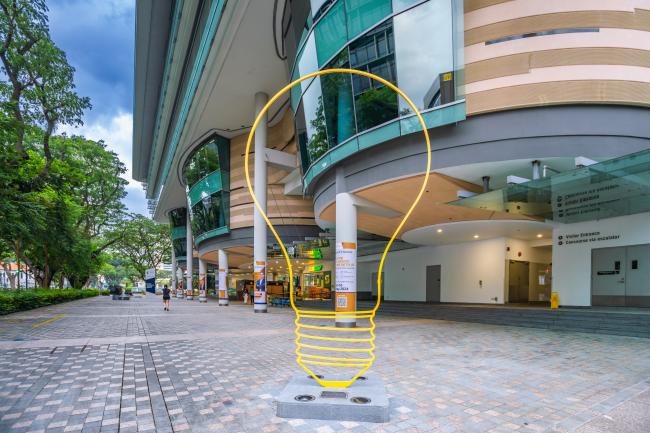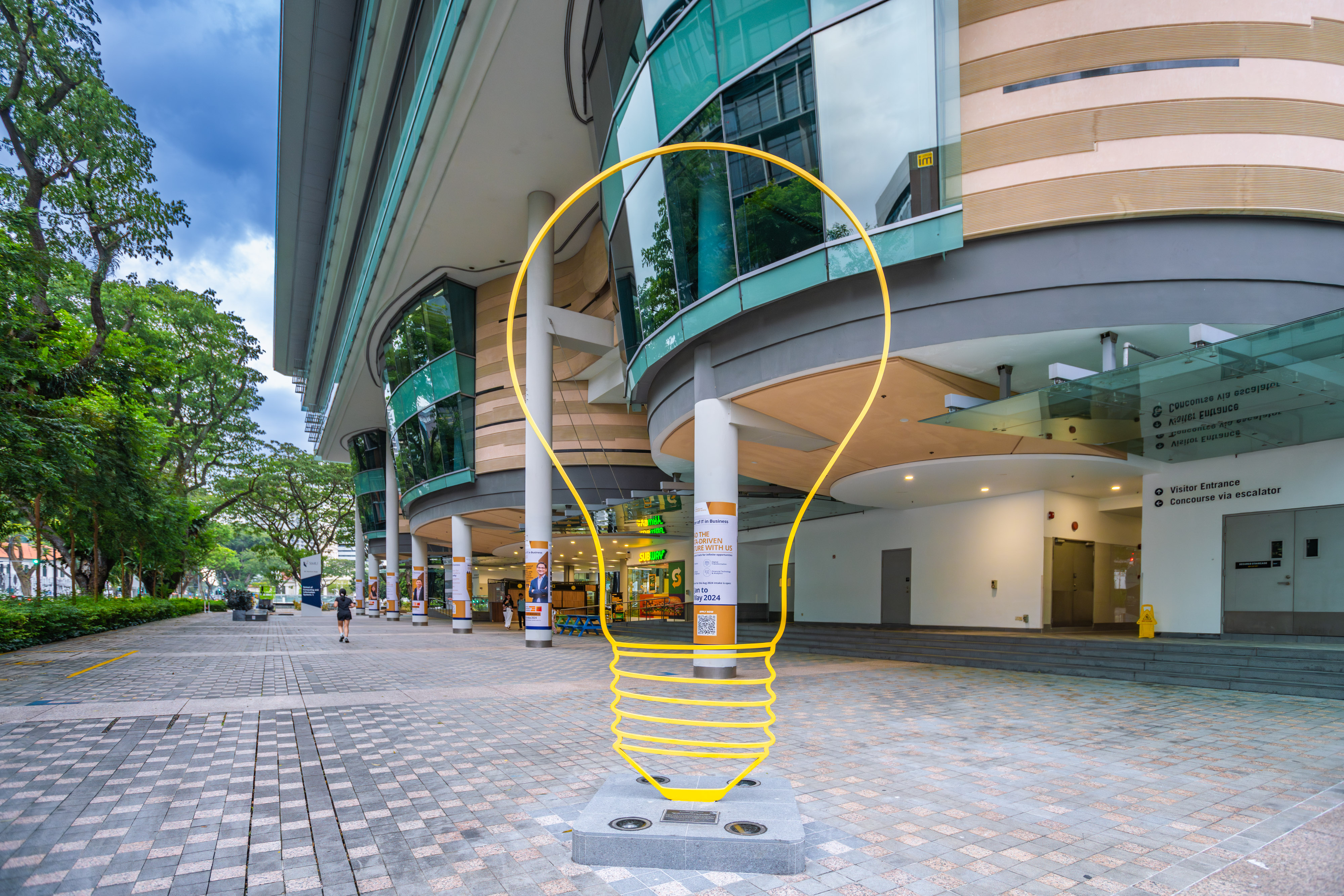Artwork Details
Bright Idea
Credit: Gift of Dato' Kho Hui Meng 2017, Collection of SMU
This artwork is part of 25x25 Campus Art Tour.
Listen to the audio description of the artwork here.
Transcript:
Playing with perception is central to works by Michael Craig-Martin. The sculpture Bright Idea epitomises this. If you were to walk around this sculpture of a larger-than-life lightbulb painted a vibrant lemon yellow, what you perceive depends on the angle the sculpture is viewed from. Viewed frontally from a distance, it appears to be a flat two-dimensional drawing of a bright lightbulb floating in space. Step closer, and it takes on a more solid sculptural presence as the steel frame becomes apparent. Walk around to see it from the side, and the form recedes into a single yellow line.
Craig-Martin is a principal figure of British conceptual art. His works consider the relationship between the art object, the image, the space, and the viewer. Since the 1990s, Craig-Martin has developed a distinctive style of sculpture which renders line drawings of everyday objects in three dimensions, instead of the objects themselves. Here, he plays with absent forms and our capacity to imagine it.
The artist has said that he is interested in exploiting the simplest of things to create things that are not so simple. He intentionally selects everyday objects like paper clips, forks, scissors and lightbulbs, and challenges us to see them anew. Rendering them in large-scale and intensely luminous colours, he dramatically reconfigures the way we relate to them, elevating them as monuments to invite us to appreciate their symbolism, essential form and timeless design.
--
Michael Craig-Martin (b. 1941, Dublin, Ireland) grew up and was educated in the United States. He studied Fine Art at the Yale University School of Art and Architecture. On completion of his studies in 1966, he moved to London where he has lived ever since. As a tutor at Goldsmith's College from 1974-1988 and 1994-2000, he had a significant influence on two generations of young British artists, among them those known as the ‘Young British Artists'.



